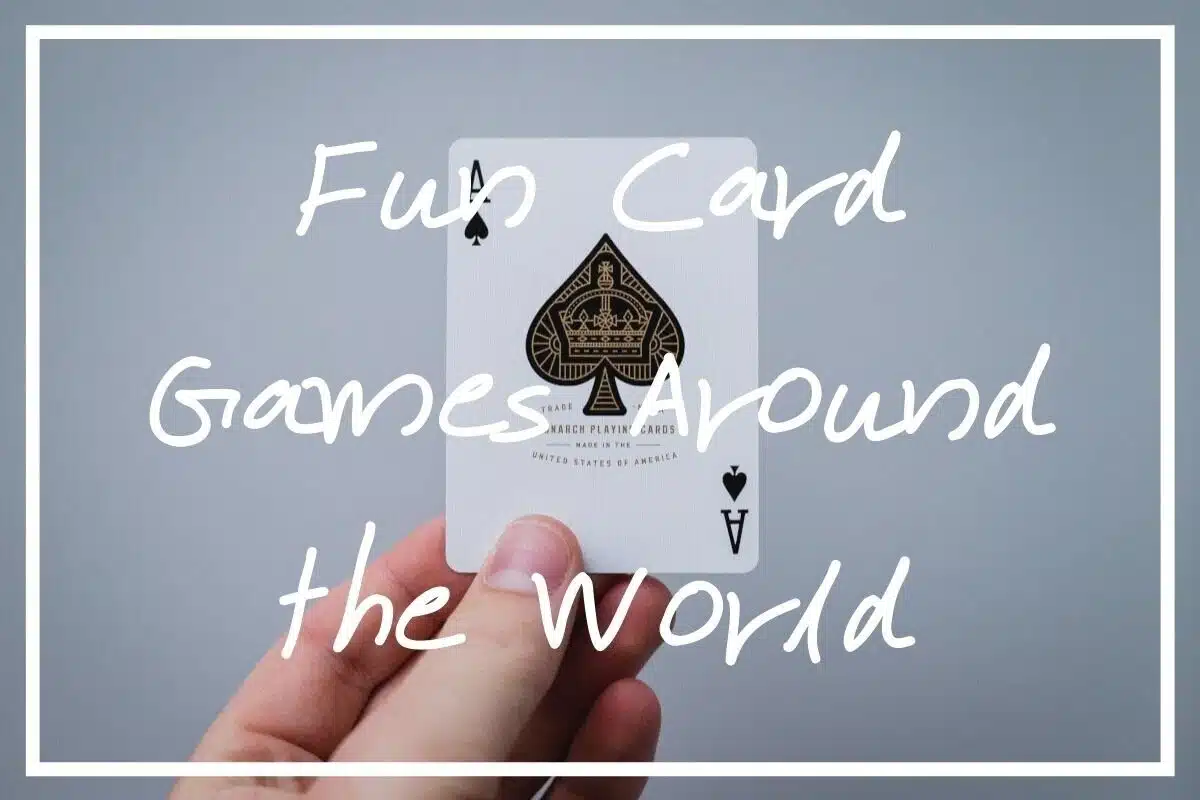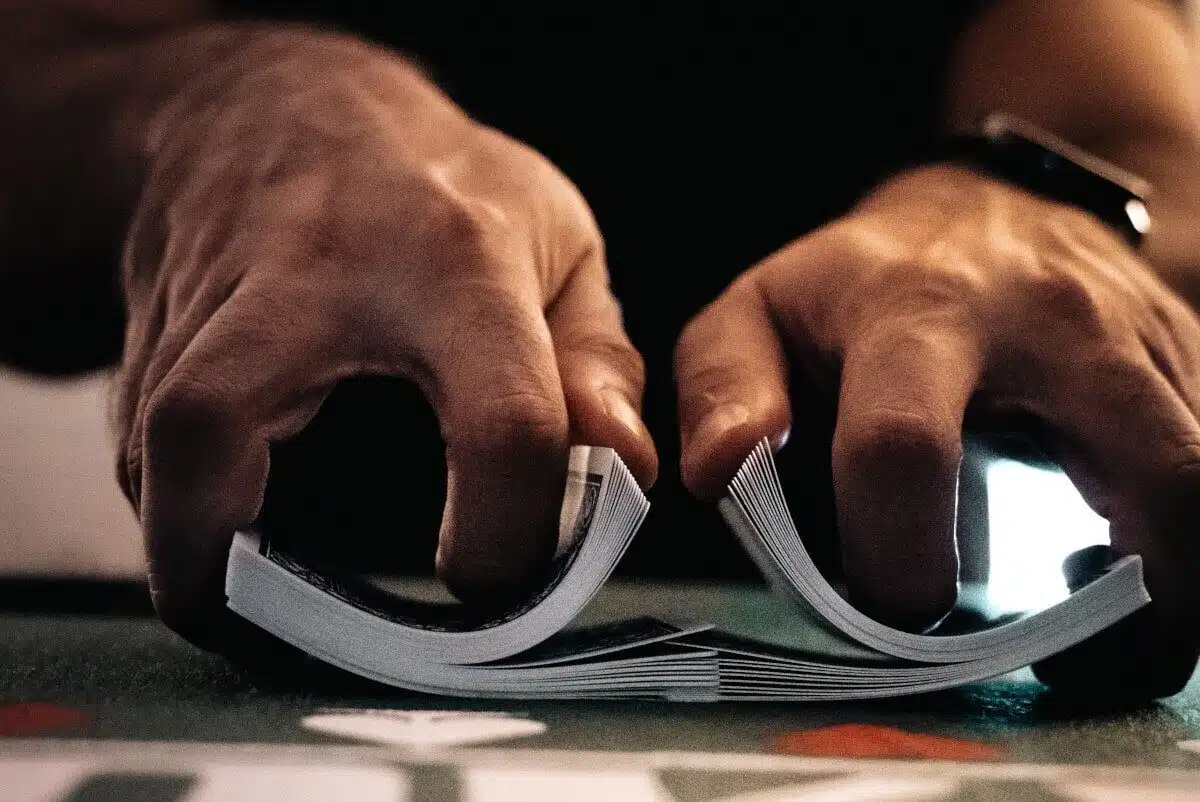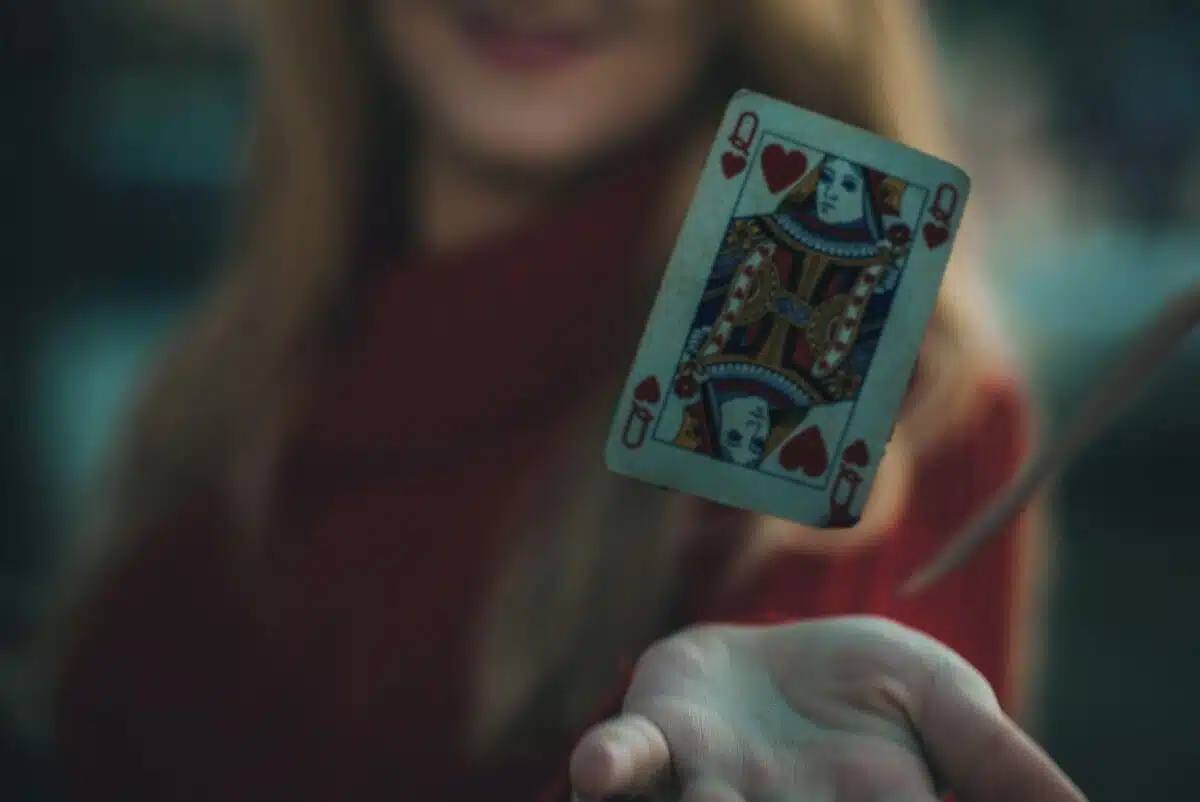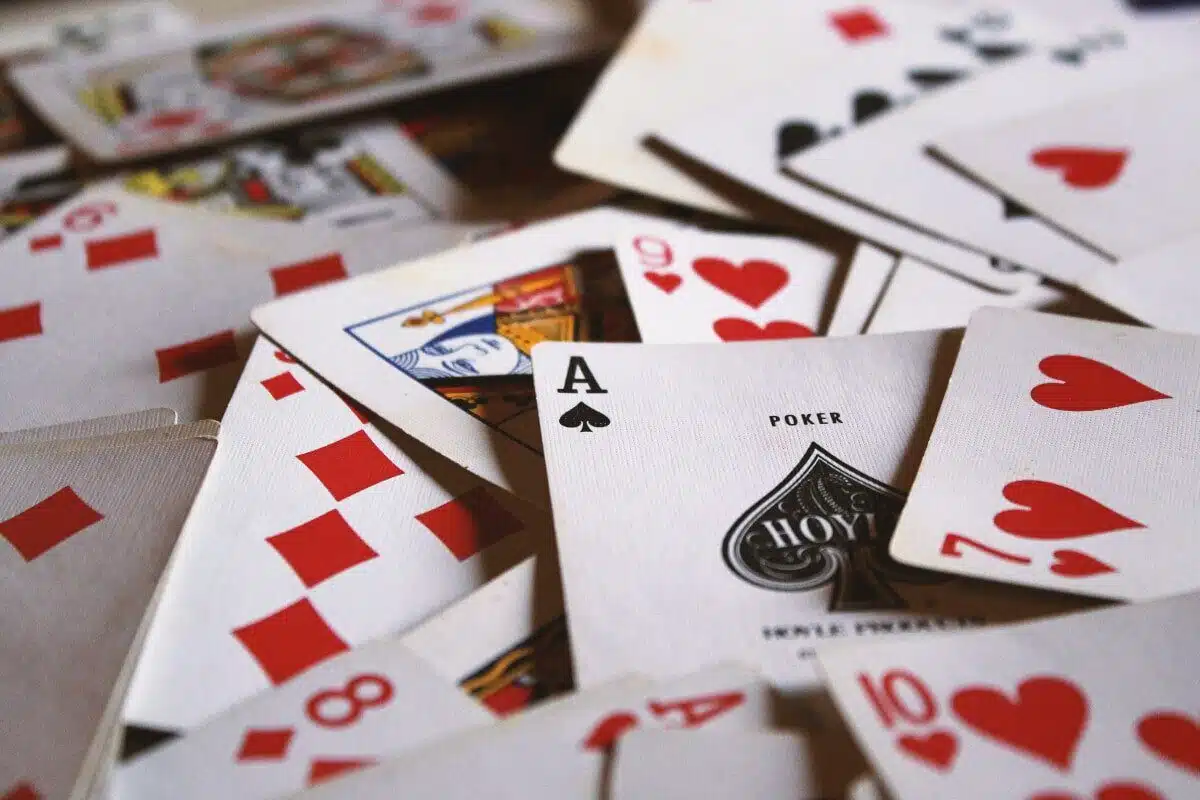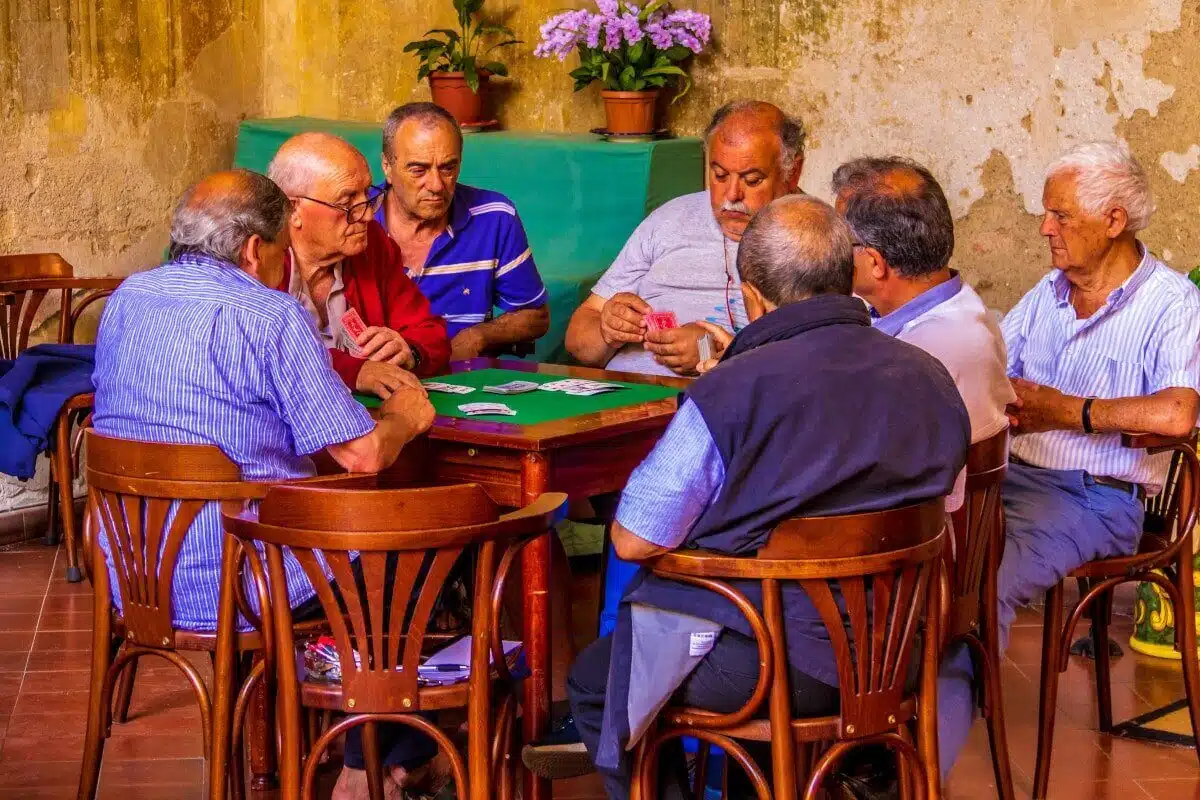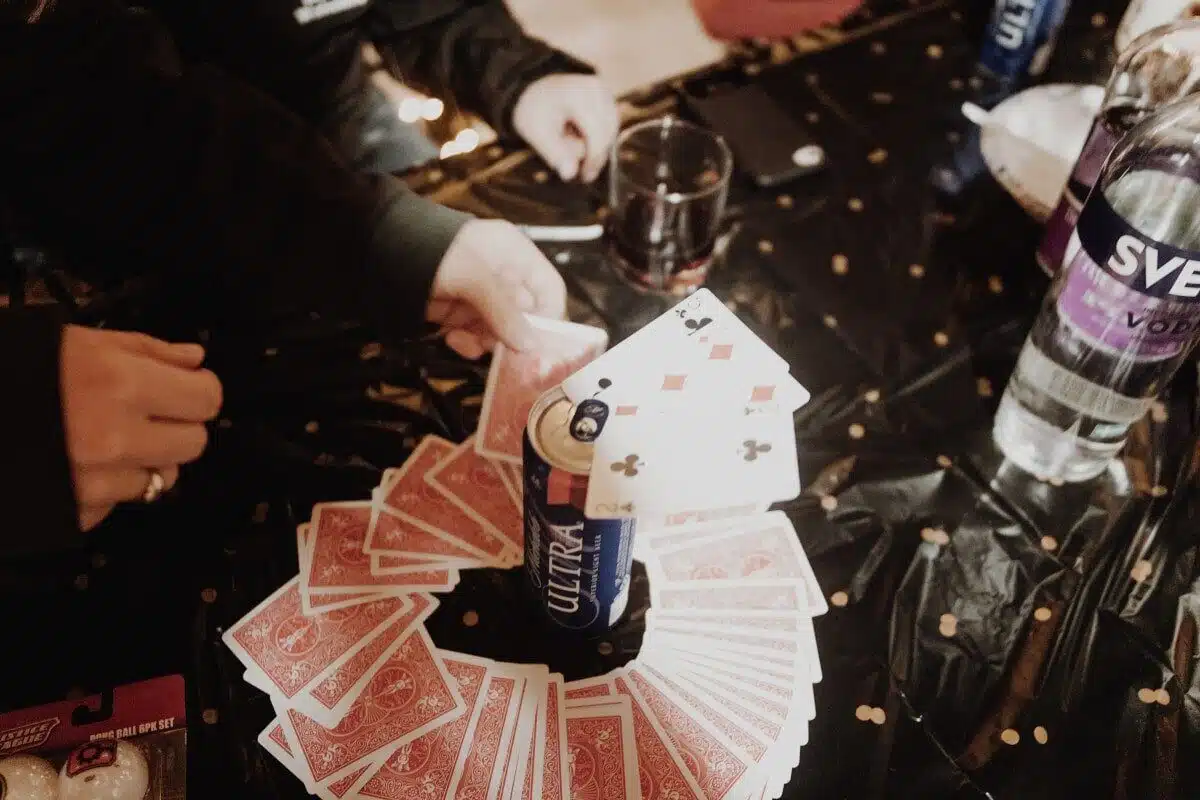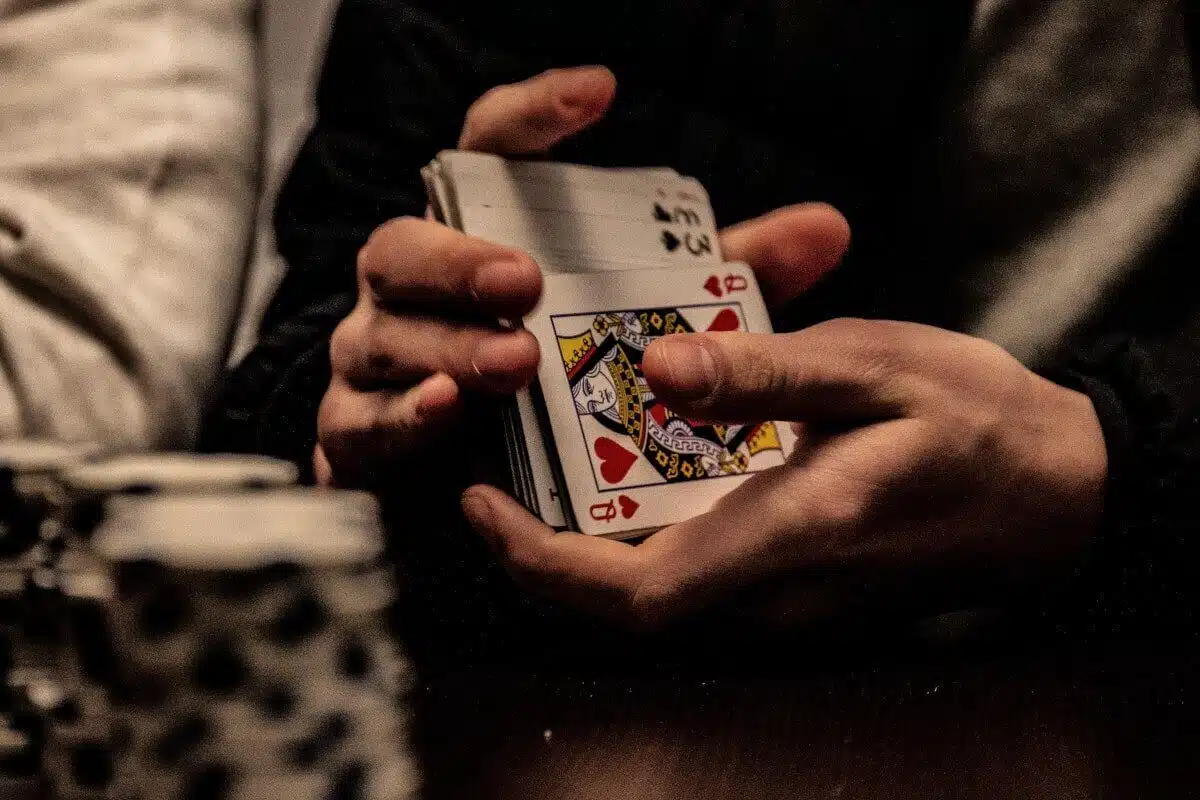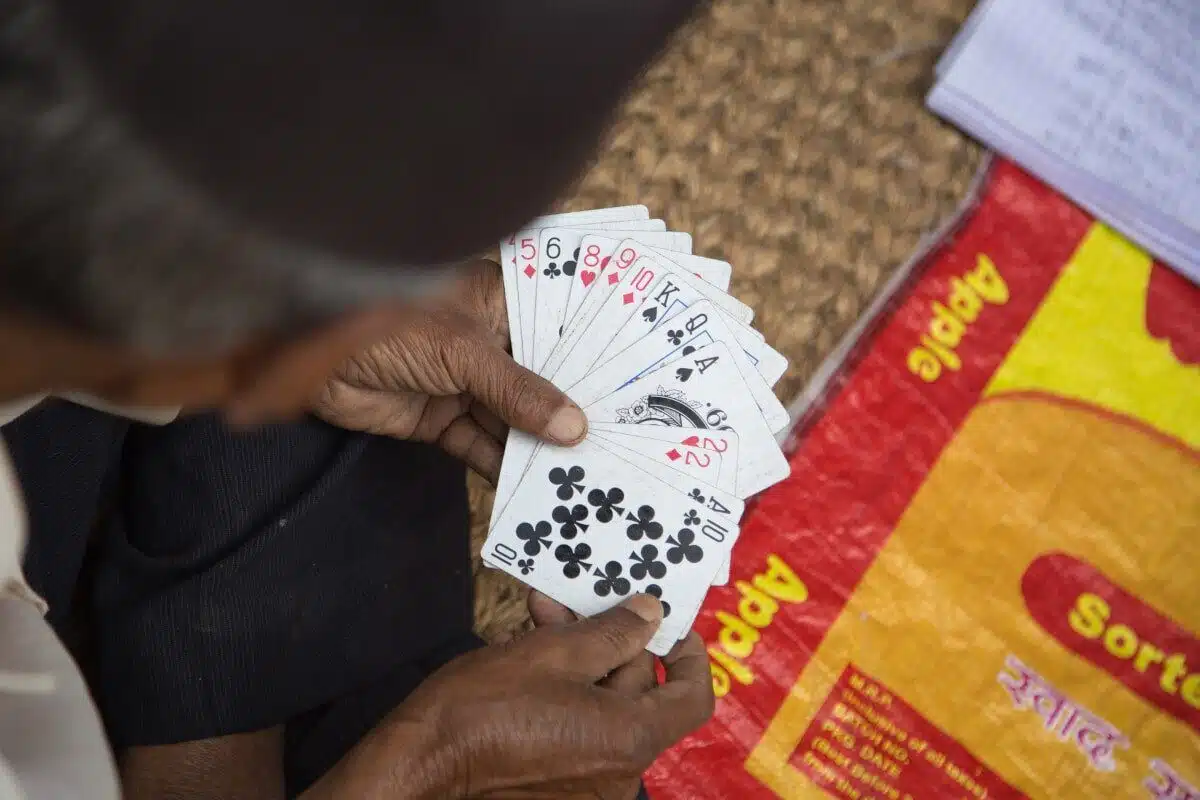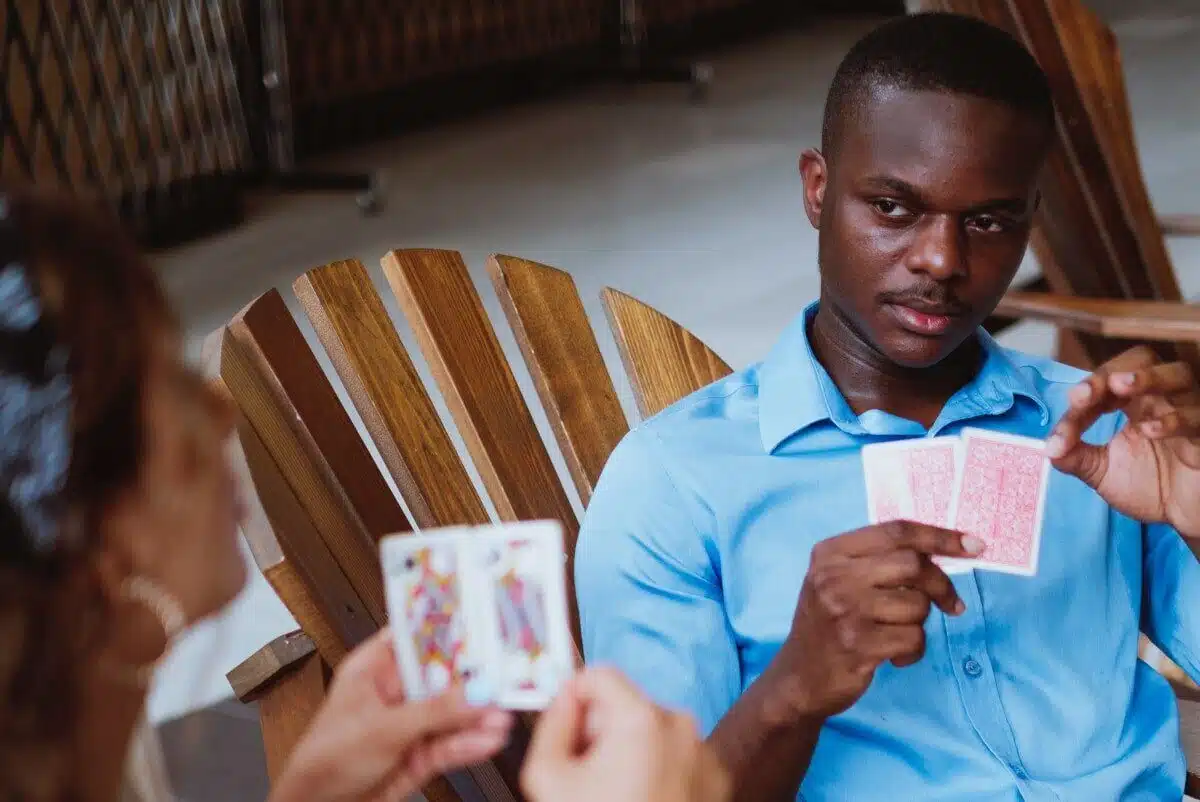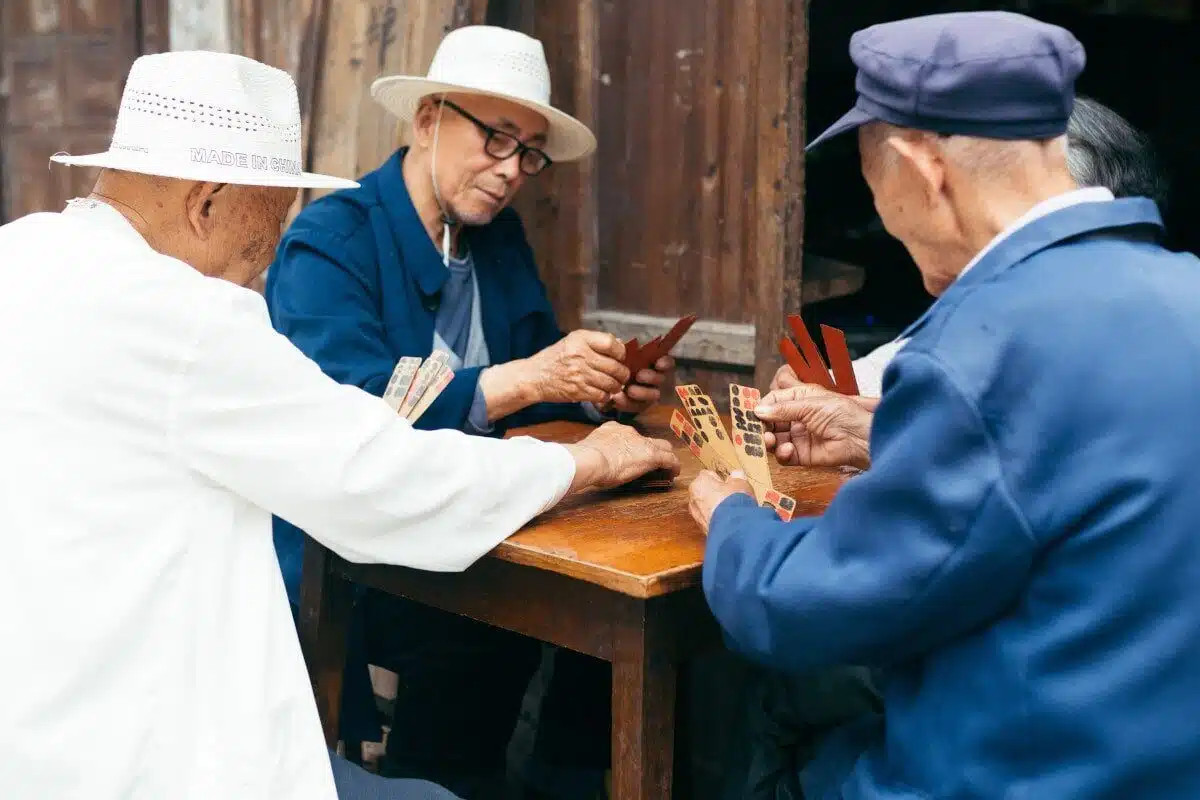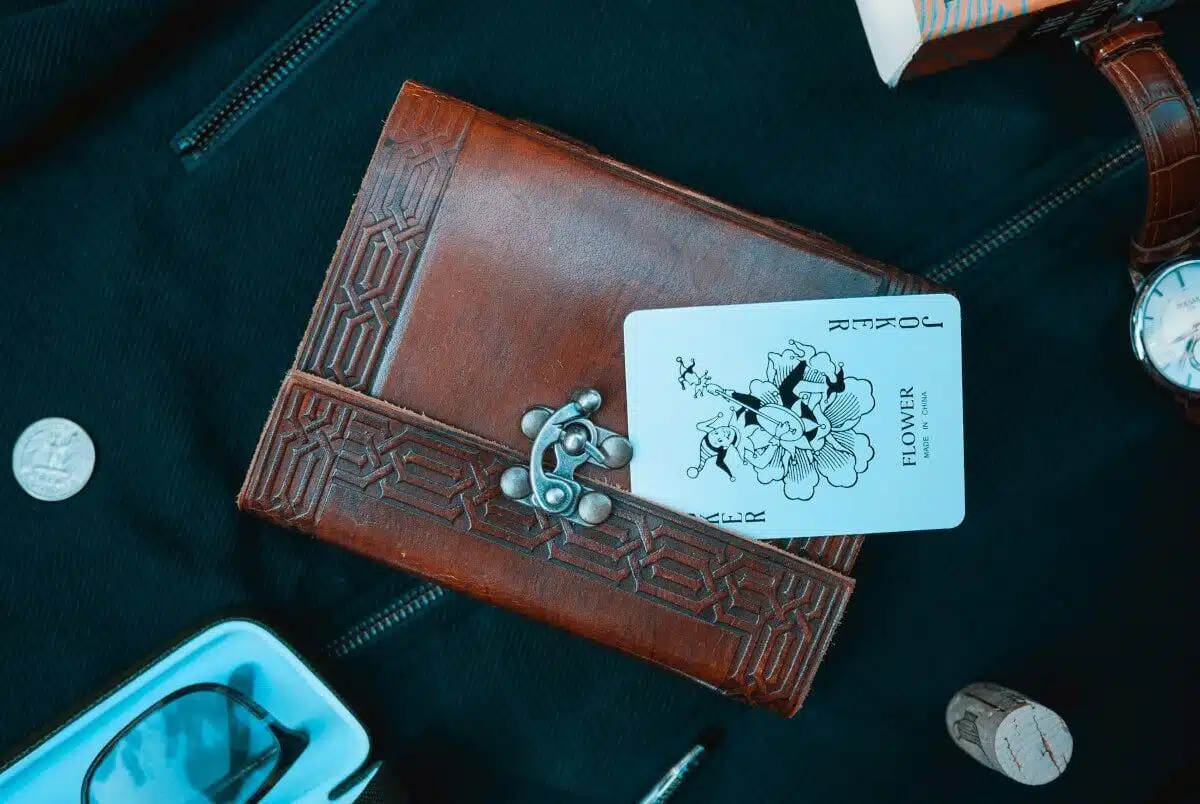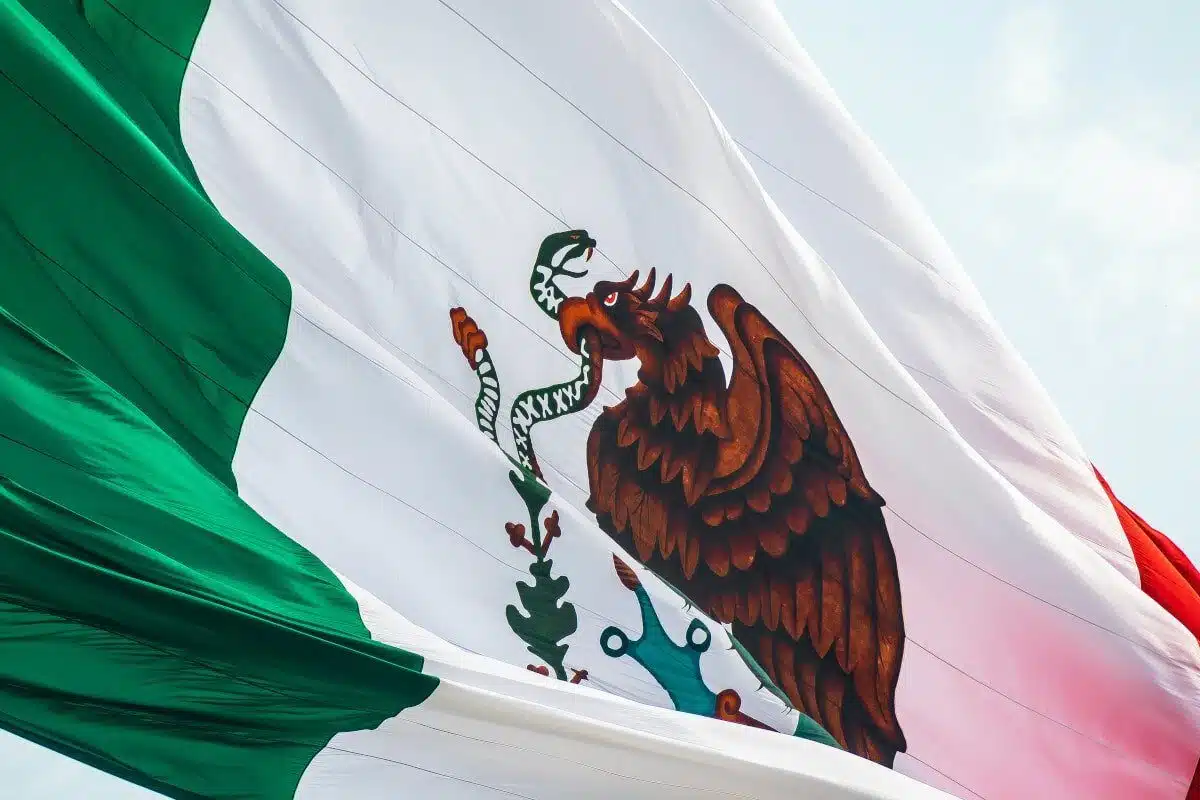Love playing card games around the world? Want to discover some new ones? I hope this post helps!
Few things in life are better than a good game of cards.
Especially when you’re travelling!
When you’re staying in hostels and meeting new people all the time, card games offer an amazing way to strike up a conversation, while away the time, and have some good old-fashioned fun.
And one of the benefits of meeting backpackers from all backgrounds is that you discover some epic card games around the world too!
You realize cards are enjoyed everywhere and that each country has its own famous card games with novel rules to wrap your head around.
I’ve been lucky enough to play some awesome international card games in the past, but my memory’s so bad I can hardly remember any of them! So, I decided to reach out to some fellow globe trotters for help.
Together, we came up with an epic list of card games from around the world for you to try out for size!
Looking for card games to play on your next adventure? Check out these 20 popular card games from all over the world.
Ready to learn about some fun card games from around the world? Here we go…
You might also like these posts:
- 50 Fascinating Facts About Travel
- 85+ Road Trip Trivia Questions & Games
- 75 Essential Things to Pack for Travel
- Key Features of the Experience of Travel
- 100 Reasons I love to Travel (& You Will Too)
- The Characteristics of Heritage Tourism
20 Fun Card Games from Around the World
Card games are played and enjoyed across the globe. Ready to learn the rules of some of the best? From Mexico and England to Nepal and the Netherlands, here are 20 of the most popular international card games out there!
1. La Loteria (Mexican Card Games!)
Country: Mexico
One of the most beloved card games in Mexico is La Loteria (The Lottery). Though a quintessential Mexican card game, La Loteria comes from Italy. It was brought to Mexico in 1769, and has since been played by families and at parties.
Besides a fun game, the beautiful and iconic artwork on the cards has taken on a pop culture life of its own. If you do a quick Google Images search, you’ll see that many people even have a tattoo of one (or several) of the cards.
If a tattoo isn’t for you, many Mexico visitors buy a La Loteria set to take home as a folk art souvenir. To pick one up, head to any local mercado (market), one of the best non-touristy things to do in Mexico City, where you can buy the game for about $50-100 pesos ($2.50-5USD).
How to play La Loteria:
The first step in La Loteria is to identify one person as the card name caller. They next pass out a board to each player. There are 54 cards in the La Loteria deck, and each board has 16 random card images on it.
Before starting the play, each player will need at least 16 small things to use as markers so they can “check off” the cards from their board once called. For this, anything can be used, but raw beans are quite common.
The caller then starts flipping the cards over and saying out each name one by one. If you have that card on your board, you mark it with a bean. When the first person has all the cards on their board marked off, they win.
By Shelley Marmor from Travel Mexico Solo
2. Shithead
Country: UK/Scandinavia
Shithead is a card game that goes by many names including Bastard, Palace, Karma and Ten-Two Slide. It’s believed to have Scandinavian origins as it’s similar to another game called Vändtia.
However, Shithead is most often played by British students and backpackers.
The aim of the game of Shithead is to get rid of all of your cards. The final player to be left with cards in their hand is known as the ‘Shithead’. The ‘Shithead’ may have to do forfeits such as deal the next game, refill everyone’s drinks or anything else that the rest of the group can’t be bothered to do for themselves.
Shithead is played with a standard deck of cards and any number of players. If more than four people are playing, it’s better to mix two or more decks together.
To begin the game, each player is dealt nine cards – three face-down, three face-up on top of those, and three in their hand. Before you start, players are allowed to switch the cards in their hand with some of the face-up cards if they wish, in an attempt to save their best cards for later in the game.
Anyone who has a 3 can lay the first card. If nobody has a 3, then the game starts with a 4, or a 5 if needed. Play moves to the left and the second player must place a card that’s equal to or higher than the card that was played previously. The game continues in a clockwise direction.
Upon discarding a card, players pick up another from the deck, as they must always have three cards in their hand unless the deck has run out.
Shithead includes several wildcards:
- 2 – play at any time, resets the count back down to 2
- 3 – play at any time, this card is ‘see-through’ so is ignored
- 7 – the next player must play a card lower than this
- 8 – the next player misses a go
- 10 – play at any time, this ‘burns’ the pile
If you have multiple cards of the same number, you can play them at the same time. If four cards of the same number are played in a row, even by multiple players, this burns the discard pile in the same way as a 10 does.
If a player cannot play a card, they must pick up all of the cards in the discard pile and add them to their hand.
When the deck has run out of cards, you just play the cards in your hand. When those have gone, you play your three face-up cards. Finally, you may play your face-down cards, one at a time, without looking at them before you lay them down.
The last player standing is the ‘Shithead’!
By Jenni Fielding from Monopoly Land.
The next item on this list of card games is one commonly played in the UK and North America. Check out the rules to Battle!
3. Battle/War
Country: UK/North America
In North America, Battle is also known as WAR.
Divide the standard 52 card deck evenly between two players, distribute cards one at a time, and face down. Each player keeps their stack face down, in front of them, and they do not look at their cards. Anyone may deal first.
Players each turn over their top card at the same time. The player with the higher card wins all cards and adds them face down, on the bottom of their deck. The cards are ranked with the Ace being the highest, and the 2 being the lowest.
If players flip over cards of the same rank, it is Battle! Each player lays out three cards face down and turns a fourth card face up. The player that flipped over the higher card takes both piles (all ten) of cards. If the players happen to both flip over cards of the same rank again, the same process is repeated until somebody wins the Battle and the winner takes all of the cards from the Battle rounds.
It is also possible to play Battle with three or more players. Deal out as many cards as possible so that all players have an equal number. All players will simultaneously turn over a card. The player with the highest card wins all turned up cards.
The game is complete when one player has the entire deck of cards.
By Debbie Fettback from World Adventurists
4. Durak
Country: Russia
An incredibly popular game in Russia and some other former-Soviet countries is Durak, which translates to fool in English.
The game is played with 2 to 6 people using a standard deck, though cards with values 2 to 5 typically removed. The goal of the game is to be the first player to get rid of all your cards after you’ve gone through the whole deck.
Each player is dealt 6 cards and one card is then turned up and placed at the bottom of the deck. The suit of this card is considered the master suit for this round of the game.
Going around in a circle, one player will place a card down to ‘attack’ the next player, who will then have to ‘beat’ that card by placing a higher numbered card of the same suit or any card of the master suit.
The defender can also attack back by placing a card down of the same value, in which case, the next person in the circle now has to defend the cards.
The attack can continue as long as whoever is the attacker or any other players can keep placing down other cards of the same value that already appear on the board. If the defender can’t beat the attack or chooses not to, then they must pick up all the cards on the board.
After each turn, players pick up cards so that they have a minimum of 6 cards in their hand until the deck is run through. The game continues until the deck is played through and one player has gotten rid of all their cards.
By Michael from Games Like This One
Want an around the world card game from Bosnia and Herzegovina? Look no further than Tač!
5. Tač
Country: Bosnia and Herzegovina
This card game comes from Bosnia and Herzegovina and is so easy kids can play it.
The game’s played with a regular card deck. All of the 52 cards are dealt in the beginning.
If you’re playing with 2 players, each gets 26. With 3 players, everyone gets 17 and one ace (1) is set in the center. For 4 players, everyone gets 13 cards.
The game begins when the first player takes from his closed pile top card and turns it around. If it’s an ace (1), they put it in the central pile (in a 3-player game, the ace is already there, so they’d need 2 instead).
Cards in the central pile are put in order from ace, 2, 3, 4, up until King, no matter the card color.
If the card can’t be put in the center pile, the player puts it in his open pile. The next player takes his card and tries to put it in the central pile, if not possible then he tries to put it to the opponent’s open pile, if not possible he puts it in his own open pile.
If a player misses an opportunity to get rid of his card, other players can call it by saying Tač! And he will receive one card from each opponent.
The goal is for a player to get rid of all of his cards, have 0 cards in his closed and opened pile.
By Džangir Kolar from Dr Jam Travels
6. Cribbage
Country: UK & North America
Cribbage, or Crib, is one of the most enduring card games, having been created in the early 1600s by the English poet Sir John Suckling. It was derived from the game “noddy” which has since dwindled in popularity.
The game was given fame through its prominent feature in Charles Dickens’ novel The Old Curiosity Shop in 1840. Today cribbage is still widely played throughout the UK, USA and Canada, with many leagues and clubs in existence, and is still considered Britain’s national card game.
Cribbage is best played with two players, although it can be played with three players, or four players in teams of two. The object of the game is to be the first player to reach 121 point (or sometimes 61 points). You accumulate points by forming different card combinations, such as pairs, sequences, fifteens and runs.
Each player is dealt six cards and discards two cards to the “Crib”, which belongs to the dealer. Play proceeds through a series of hands, each consisting of different game stages. These include the “deal”, “the play” and “the show”.
Typically, scoring is recorded using a crib board with either 61 or 121 holes and pegs. However, this is not essential to play the game, you can just make note of your score.
It is a fun card game that has stood the test of time, requiring both luck and skill to win, and is the only card game that can be played legally in pubs in England without requiring additional licensing. There’s a good chance that if you pop into an English village pub, you’ll find a game of cribbage taking place!
By Sophie and Adam from We Dream of Travel
Bhabi is one of the international card games played in Pakistan. Here’s how to play…
7. Bhabi
Country: Pakistan
Every nation has its own card games or version of famous card games. One such game in Pakistan is called “Bhabi”.
It is a famous family game and played by people of all ages. The best thing about this game is there is no set limit about the number of players, although the recommended number of players is 4 or 5 but can be played by 2-13 people.
The aim of the card game is to finish your cards before the others and the last remaining person loses. Families often have a fun “punishment” attached to losing.
You need the whole pack of 52 cards for this game, which are then divided among the players one by one. If there are more players you can use more than one deck.
After the cards are divided, the player that is dealt the Ace of spades must begin with the person sitting next playing their card next. Everyone else must play the same suit that was led (for the first round it has to be spades as the ace of spades always leads).
At the end of each round of cards, the person with the highest card plays a card of their liking. So the person who played the ace of spades has to play the first card again, it can be any card of his/her choice.
The fun begins when a suit is played, and someone does not have that suit.
In that scenario, the person can throw any of his/her cards and the person who has played the highest card in that round has to collect all the cards that have been played so far.
The best strategy to play this depends on the number of people playing. So if 4 people are playing it is always better to play your highest cards of any suit in the beginning so you are left with smaller cards at the end (so that you do not have to pick up the penalties) and hence can end the game early and not lose.
By Ucman Scher from Brown Boy Travels
8. Flash
Country: India
Flash, also known as Teen Patti or Flush, is a super-fun card game that originated in India but is also played all over South Asia.
It is an Indian version of the popular UK game ‘Three Card Brag’ or a three-card poker with slightly different rules. The game is especially played during the Indian festival of Diwali between family and friends.
Flash can be played with 3+ players. The aim of the game is to have the best hand (or bluff it) and maximize the pot before the showdown.
The game begins with each player contributing a fixed amount (boot) to the central pot. Players are then dealt three cards face down. Everyone takes turns to pack (not continue), call (continue game), or raise (increase the betting amount) in a clockwise direction till showdown. The winner is determined based on the following rankings:
- Set: Three cards of the same rank.
- Pure Sequence: Three consecutive cards of the same suit.
- Sequence: Three consecutive cards not of the same suit.
- Colour: Three cards of the same suit not in sequence. If two players have flushes, the player with the higher card wins.
- Pair: Two cards of the same rank. If two pairs are the same, then the third card value decides the winner.
- High Card: Playing on a single high card.
Some game rules:
- Blind: Betting when playing without seeing cards: if the previous player is seen and bet 10, you can bet either 5 or 10; if the previous player is blind and bet 10, you can bet either 10 or 20
- Seen: Betting rule when playing seen: If the previous player is seen and bet 10, you can bet either 10 or 20; if the previous player is blind and bet 10, you can bet either 20 or 40.
- Sideshow: This means that a player can match the current bet and ask the previous player to have a private showdown but only if both are playing seen and only if the previous player accepts. The player with the worse hand folds. If the hands are the same, then the player who asked for the sideshow folds.
By Trisha from Try Wandering More
One of the best card games in Italy’s called Scopa. Here’s how to play it:
9. Scopa
Country: Italy
A perfect gift for Italy lovers or international card game fanatics, Scopa is a few-centuries-old Italian game.
It’s traditionally played with two to four players and a deck of 40 Neapolitan cards, divided into four suits – Cups, Coins, Swords, and Clubs. Their value is 1-7, and there are three face cards: Knave, Knight, and King, with a value of 8-10.
The dealer puts four cards on the table, visible to all, and gives each player three cards.
Now, a player has two options: put down one card on the table or match the value of a card in their hand to the value of one or more cards on the table and set those aside until calculating the results. If they can match both a single card or the sum of several cards, they must match the single card. For example, if on the table there’s a 9, and you have 3,6, and a 9, instead of matching the sum of 3 and 6, you must match the 9.
When all the players are out of cards, each player gets three more cards.
The game continues until the entire deck has been played. The last player that has a match gets all the cards left on the table, and the results are calculated. Now, calculating how many points each player gets might seem tricky at first because it’s not straightforward, but you’ll get used to it in no time.
By Or for My Path in the World
10. Casino
Country: England
The game of Casino was first played in England in the 1700s. It became quite popular and later caught on in Vienna and Prague as well.
In the second half of the 19th century, as its popularity in England was beginning to wane, the game of Casino began to catch on in the United States and included several variants.
Casino is best played with just two players, though you can play with up to four. Using a regular deck of cards, deal four cards to each player and lay four cards face up in the center.
Players can capture the cards on the table using the cards in their hand in one of two ways. The first is by matching (ie. a 9 picks up a 9). The other is by combining two or more table cards to become the equivalent of the card in the player’s hand (ie. you can pick up a 7 and a 3 using a 10).
Cards can also be built. To build, a player adds a card in their hand to one on the table and announces they are building (ie. “Building 5s”). They must pick up the build during their next turn, assuming the opponent does not get to it first. A player cannot make a build unless the capturing card is in their hand at that time.
If a player is unable to capture a card or create a build, they must lay a card from their hand onto the table, after which it becomes the next player’s turn. When the players have no more cards in their hand, the dealer deals each player another four cards.
The last player to capture cards concludes the round by picking up the remaining cards on the table.
Each player then counts their captured cards using the following metric: 1 point for the most spades, one point for each ace, 1 point for the 2 of spades (little casino), 2 points for the 10 of diamonds (big casino), and 3 points for the most cards. The game is typically played until a player reaches a score of 21.
By Julien from Cultures Traveled
Cuarenta is one of the classic South American card games to enjoy on your travels!
11. Cuarenta
Country: Ecuador
The popular card game Cuarenta – or, Forty, in English – is a card game played throughout Ecuador, and is considered the country’s national card game.
While this card game is played almost exclusively in Ecuador alone, you’ll find casual games and more formal tournaments everywhere, including the Fiestas de Quito celebrations and in tournaments that are a part of celebrations of Carnival in Ecuador.
Cuarenta refers both to the goal of 40 points to win the game. The game is usually played with two teams of two players, and a standard deck of cards, with jokers, 8s, 9s, and 10s removed.
The dealer deals 5 cards per person, and the player to the right of the dealer starts, with the game play continuing counterclockwise. Each player plays a single card at a time, trying to capture cards on the table or score points in the following ways:
Playing a card of the same number that has just been played – this is worth two points and is called a “caida.”
Playing a card whose value is the sum of the cards already on the table. If there are already a 2 and 3 on the table in the current round, the next player would want to play a 5. Players earn two points if by doing so they clear all the cards from the table.
Playing a card to end a sequence. For example, if other players have played a 2, 3, and 4, the next player should add a 2 to clear the table, take the cards, and earn two points.
Once the deck runs out, players will get a point for every card they have captured beyond 19 cards, in addition to the points accumulated throughout the game. Whoever reaches 40 points wins!
By Carley from Home to Havana
12. Racing Demon/Nerts (American Card Games)
Country: England/US
Racing Demon is one of those card games where you suddenly remember (or discover!) how competitive your family and friends are. It can be fast, energetic and ruthless- so it’s more of an adult or older children’s game– younger kids are likely to be swamped and frustrated that they can’t play as fast.
The game is a multi-player version of Solitaire. It’s called Racing Demon in England, Nerts in the USA and Pounce internationally but I believe the rules are the same all over.
It’s best played with 3 or more players, although 2 can play with modified Racing Demon rules. Each player starts with their own pack of cards and then begins a game of Solitaire, whilst trying to discard their cards onto the Aces. The Aces go into the middle and can be built upon by anyone…which is where the fun starts.
Whoever puts the next correct card in the suit onto an Ace can leave it there (it’s discarded), while the other player must return their card to its place in their game. The aim is to get rid of your cards by building up the aces in suits up to a King. Once a King has been placed on an Ace pile, you cannot add to it again.
The winner is either the first to get rid of all their cards or you can score points, which can mean the first to finish isn’t necessarily the winner…!
By Kat from Wandering Bird
Looking for famous card games from Malta? Check out Ħalliela!
13. Ħalliela
Country: Malta
The fishing game Ħalliela originates on the island of Malta but is played extensively throughout the Mediterranean region.
This popular Maltese game, also referred to as Bella Donna, is adapted towards adults and is often a Sunday afternoon pastime of choice. The game uses the standard international 52 card pack, where the suits comprise of dinari, koppi, mazi, and spadi, and is played towards a target score.
This final target score is not defined but is usually set at 100 or 200 points, dependent mainly on any time constraints.
Ħalliela’s played counter-clockwise by two people or four in partnership. To start, a hand of three cards is dealt to each player plus four to the table. Each player then takes a turn to drop a card. When all the players have played their cards, three more cards are dealt.
This continues until the deck is exhausted.
Kings, Queens, and Jacks hold no numerical value while the taking of a red card gains one point. There is a bonus for clearing the table and another for taking the card played by the previous player. The player with the highest number of points at the end is crowned the winner.
There’s a whole lot of things to do in Malta and trying your hand at Ħalliela should not be missed.
By Rai from A Rai of Light
14. Klaverjassen
Country: Netherlands
Klaverjassen is a traditional trick-taking game from The Netherlands. It’s especially popular among the older generation (read people above 70 years old). However, as a 26-year old myself, I can guarantee it’s fun for every generation!
The aim:
The aim of the game is for you and your partner to gain the most points over sixteen rounds.
The set-up:
Klaverjassen is played with 32-cards of a regular deck (Ace, King, Queen, Jack, and 7–10 of all four suits). Traditionally, it’s played with four players in teams of two, partners sitting opposite of each other.
The start:
All players are dealt eight cards. The player left of the dealer chooses the trump suit for that round. There are variations to this bidding process, but for simplicity, we will stick with just one.
Needless to say, this player is not allowed to consult his partner about which suit to choose for trumps.
The first trick:
As you would expect of a trick-taking game, Klaverjassen is played in tricks in which you can collect valuable cards or bonus points.
The player left of the dealer plays the first card of the trick and then it’s played clockwise. All players have to follow suit. If you can’t follow suit, you have to play trumps, and you always have to beat the trumps that are already on the table.
If you can’t follow suit nor play trumps, you can play any card you like. (These are the Rotterdam rules, but again there are variations).
The highest trump wins the trick. If there are no trumps, the highest card of the suit that started the trick wins. The player who played the highest card starts the next trick.
Card values:
Trump suits:
- Jack: 20
- Nine: 14
- Ace: 11
- Ten: 10
- King: 4
- Queen: 3
- Eight and Seven: 0
Other suits:
- Ace: 11
- Ten: 10
- King: 4
- Queen: 3
- Jack: 2
- Nine, Eight, Seven: 0
- Bonus points
In addition to the points gained by collecting cards during a trick. You can also gain bonus points called “Roem”. Roem can be collected by:
- Winning the last trick: 10 points
- Winning all tricks in one round: 100 points
- Winning a trick with one of the following combinations:
- Four Jacks: 200 points
- Four cards of the same rank: 100 points
- Four consecutive cards of the same suit: 50 points
- Three consecutive cards of the same suit: 20 points
- King and Queen of trumps: 20 points
At the end of each round, the valuable cards are counted and summed with any bonus points. If the bidding team did not gain half of the available points, all points (including bonus points) will go to the opposing team.
End of the game:
A total of sixteen rounds are played, after which the total of all points is counted and the team with the most points in total wins.
By Lara from The Best Travel Gifts
Here’s another South American option on this list of card games! This one’s called Chinchón and it’s from Argentina…
15. Chinchón
Country: Argentina
Chinchón is one of Argentina’s most popular card games! Although it’s also played in Spain, Uruguay, and Cape Verde, some rules might vary from country to country.
To play the classic Argentinian version of the game, you’ll need a full Spanish deck of cards.
The goal of the game? To combine sets of 3 or more equal numbers or ladders. You can use all cards on the deck, including the wild card.
An important rule is that you need to combine these sets in a way where you can end the round with a card of equal or less value than 5. At the same time, you shouldn’t be left with more than 5 points in your hand. Wait, what? Let’s talk about how the game goes.
Each player receives 7 cards. The remainder of the deck is placed on the table with one card on the side facing up.
The first player can choose to pick a card on the deck or grab the one facing up.
As the game moves forward, each player will pick a card and discard another one. Again, the goal is to put together the sets of numbers and ladders. So once a player has enough of these, they can choose to end the game by placing their last card facing down. This is called “cortar” (“to cut”).
So to circle back! The card that ends the round can’t be higher than 5. But then, at the same time, the player can’t have over 5 points in hand. The idea is to be left with 0. When counting the points, this will be jotted down as “-10.”
The game ends once a player first reaches a score of 100. All in all, the absolute goal of Chinchón is to have the lowest score possible.
If a player presents a full ladder (meaning all 7 cards are consecutive and from the same suit), then you’ve got an instant winner, and the game is OVER!
By Martina Grossi from The Global Curious
16. Doppelkopf
Country: Germany
Doppelkopf is a very popular card game in Germany, especially among the younger generation. It translates to “double head” and is usually played with four people.
It’s unclear where exactly the game originated but it’s most commonly played in central and northern Germany, especially the state Hesse. It has some similarities with the game Skat which is another very popular card game in Germany.
The game is played in pairs where two players play against two others. The pairs are switched out for every round. 48 cards (12 from each suit) are necessary to play. Only nines, tens, jacks, queens, kings, and aces are allowed in the game and exist twice for each suit. The ten of hearts is the highest card.
During the game, the worth of the cards can change which makes it quite tricky to learn for beginners. As the cards are distributed among the players they can swap out cards and make announcements that will later define the game.
Due to its sometimes confusing rules, it’s best to learn Doppelkopf in action and once you have a grasp of the card values it’s much easier to understand.
Doppelkopf is even played competitively in Germany, so if you practice enough you might be able to join a tournament!
By Victoria from Guide Your Travel
Follow their adventures on Instagram and Facebook.
Dumbal is one of the most popular card games in Nepal. Here are the rules:
17. Dumbal
Country: Nepal
Dumbal (also known as jhyap) is the most popular card game in Nepal.
The game can be played with 2-6 players. All you need is a normal deck of cards. The cards are worth their face value, so an Ace is worth 1 and a King is worth 13. Each player is dealt five cards and the game is played in clockwise direction.
Dumbal’s a draw and discard game where your goal is to get the lowest total value of cards in your hand.
On a normal turn, you do two things:
First, you discard one or more cards on the table. After that, you pick up a new card either from the top of the deck or one card that the previous player just put on the discard pile. Once the deck is gone, the discard pile is reshuffled.
You can usually discard only one at a time.
However, you can also toss away two or more cards of the same rank (i.e. three Kings) or a sequence of 3-5 cards with the same suit (i.e. 8-9-10 of Hearts). As you only pick one card at the end of the round, the size of your hand starts with five cards and gets smaller with each discarded combination. You need both luck and strategy to be able to discard multiple cards at once.
If the total value of your hand is five or less, you can end the game at the beginning of your turn by revealing your cards. The round ends and everyone reveals their hands.
If you still have the lowest total, you win. If someone else has the same or a lower sum, they win instead. You do not need to reveal your hand with a low total value straight away – if you wish, you can keep playing to get the sum even lower.
By Arimo from Arimo Travels
18. Moutzouris
Country: Greece
A childhood favourite throughout Greece (but super fun for all ages), Moutzouris is one of the most popular card games in the country. Moutzouris is the Greek word for smudgy, which should give you an indication of how entertaining this card game is!
Moutzouris is played by two to six people with a standard 52-card deck.
Before you start playing, you need to put all face cards and Jokers aside. Keep only one, usually the King of Spades or a Joker, which will be the star of the game from now on:
Moutzouris.
Shuffle the cards and deal them until every player has the same amount of cards in their hands. Depending on how many players there are, it just so happens that one or more players are dealt one card less. That’s perfectly fine.
Once the card deck is dealt, every player must immediately check the cards in their hands for pairs (e.g. two twos, two fours, etc), and discard these cards face up in the centre of the table.
Then, each player holds the rest of their cards like a fan in their hands, making sure that the other players can’t see which cards they’re holding.
The first player takes a card from the person sitting to their left, without knowing which card they’re picking, of course. If this card makes a pair with one of their own cards, they immediately discard the pair. The following player does the same and so on. If someone’s left with no cards in their hands, they’re out of the game and, also, out of harm’s way.
You see, this game doesn’t have an epic winner but a grand loser instead!
The player who’s stuck with only the Moutzouris card in their hands when the rest of the players have discarded all their cards becomes the Moutzouris. The Moutzouris’ fate is predetermined.
At the end of each round, whoever becomes the Moutzouris is awarded a big fat crayon smudge on their hand, or in naughtier cases, on the face!
By Maria from It’s All Trip to Me
Want to learn an Israeli card game? Yaniv would be a great place to start!
19. Yaniv
Country: Israel
Yaniv is an Israeli card game, highly popular among Israeli backpackers and travelers. The roots of the game come from Nepal and the Israeli version was invented by two travelers named Yaniv and Assaf.
The goal of the game is to get the fewest points in each round. Each card in the deck is valued according to its rank, while face cards worth 10 points and jokers worth zero.
The game starts with dealing each player (2-5 usually) 5 cards and the remaining are placed in a draw pile. The first player discards one card (preferably the highest value) and then draws a card from the pile.
The next player also discards one but can either draw a card from the pile or take the last card discarded by the previous player. And so on. The players can also discard a set – two are more of the same rank, or three or more of the same suit consecutive ranks. In this case they still need to draw only one card, hence lowering the number of cards in their hand.
Once a player goes below the sum of seven in their hand, they can call “Yaniv” when it’s their turn again. If the sum of their cards is the lowest, they win and score 0 points. Everyone else scores according to their cards. If another player has a lower sum, they call “Assaf” and become the winners of the round. They score 0 points, while the player who called “Yaniv” is fined with extra 30 points.
The game ends when one of the players reaches an agreed-upon points limit. In some versions, reaching any multiple of 50 score, cuts that player’s score in half (for example from 100 to 50) and the game continues.
By Moshe from The Top Ten Traveler
20. Cabo (Kaboo)
Country: Middle East
Cabo (otherwise known as Kaboo) is probably my favourite card game in the world! I’ve had hours of fun playing it on my travels and can’t recommend it enough.
The aim of the game is to be the player with the lowest value cards by the end of each round. You can play with 2+ players (3 to 4 is ideal in my opinion) for as long as you want, tallying up your scores each time. The winner has the lowest score when you eventually bring the game to an end.
Here’s how to play Kaboo:
With an ordinary deck of cards (jokers included), you deal 4 cards face down to everybody playing. Place the rest of the deck face down in the middle and place the top card face up to form a ‘discard pile’.
Each player then arranges their cards into a square-shape in front of them (2 in front and 2 at the back). Each player then looks at the 2 cards nearest to them (not the 2 at the back), being careful not to show anybody else, commits them to memory, and then puts them back in position.
Important: once you’ve looked once, you’re not allowed to look again (unless you get a special card). Oh, and never let anybody else see your cards!
Whoever is left of the dealer starts and the play continues clockwise.
You can do one of three things:
- Pick a card from the centre pile and a) keep it and put one of the other 4 cards in your hand onto the discard pile or b) put it straight onto the discard pile.
- Pick up from the discard pile and put one of your initial 4 cards onto the discard pile.
- Call “cabo”/”kaboo”.
Calling Kaboo is like saying “I think I have the best/lowest scoring hand”. When someone calls it, everyone else (not the person who called it) gets one more turn. Then everyone reveals their cards.
However, the spice things up a bit, there are ‘special’ cards too. If you discard one of these cards, you can (if you wish) use the power.
- Black (AKA spade or club) King = you can look at a card in someone else’s hand and, if you wish, swap it with one of your own.
- Queen = you can swap a card from your hand with someone else without looking first (AKA a ‘blind swap’).
- Jack = you can look at a card in your hand.
- 10 = you can look at a card in someone else’s hand.
Remembering your own cards and finding out what other people have are both important. Why?
Well, first, if you discard a Black King or Queen, you can swap one of your high-scoring cards with a better one that you know your friend has. Second, there’s something called ‘snapping’.
Imagine someone discards a card- let’s say an ‘8’. If you have an ‘8’ in your hand too, then you can pick it up and discard it at the same time! But be quick. Only the first person to ‘snap’ gets to keep it there. Everyone else must return their card to its original position (and, guess what, you now know what they have and where it sits!).
Whenever someone next discards an ‘8’, you can (if you get there first) take that person’s ‘8’ and discard it for them. You’d then give them one of the cards in your hand!
However, imagine that someone tries to ‘snap’ but gets it wrong- they pull the wrong card from their hand (remember, everything’s face down still). The punishment for this grievous error is to a) return that card to its original position, and b) take two additional cards from the centre pile (face down) and add them to their hand.
As for scoring, cards have the following values:
- 2-10 = face value
- Jokers = -1
- Red King = 0
- Black King = 13
- Queen = 12
- Jack = 11
We’re at the end of this list of copular card games from around the world! Check out this bonus game from India before you go though!
21. Bonus: Carrom (Not quite a card game, but a fun game from around the world nonetheless!)
Country: India
One of the world’s most unique and fun games is called carrom.
Carrom originated in India and today remains extremely popular throughout South Asia. You can easily find the game being played in cities and towns all over the region including Lahore, Pakistan where it enjoys considerable popularity. The game is played on a wooden board and utilizes 19 carrom “men” as the pieces are called.
A light powder is first applied to the board and players then slide the men across with what’s called a striker. The men are a mixture of black and white, along with one red “queen” piece that’s placed at the center of the circle during set up. If you’ve played pool before, you’ll find carrom very easy to pick up.
The game begins with a toss where both players must guess which color man is being held in each hand, and the winner strikes first. If the winner scores, he gets another strike, and if he misses, it becomes the other player’s turn.
The objective of carrom is to drive the carrom men- and the queen- into any of the four corner pockets before your opponent. Each black and white man is worth one point whereas the queen is worth three, and typically the player who gets to 25 points first is declared the winner.
Overall carrom is a fun and much-loved game, and you should definitely give it a go anytime you find yourself in South Asia!
By Samantha from Intentional Detours
Enjoy Card Games Around the World
I love playing card games around the world. It’s one of the many joys of travel!
Aside from learning something novel and stimulating, cards help you make new friends, strike up a conversation, and have some fun when you aren’t out exploring too. It’s cool to think that something as simple as a deck of cards can have so many advantages.
However, to reap those rewards you first need to know some good games to play! And that’s where I hope this list of card games comes in handy. Keep these international card games in mind and you should never be short of something to play on your upcoming adventures.
For more ways to stay entertained, you might like this list of 50 fun travel facts!
Blog
